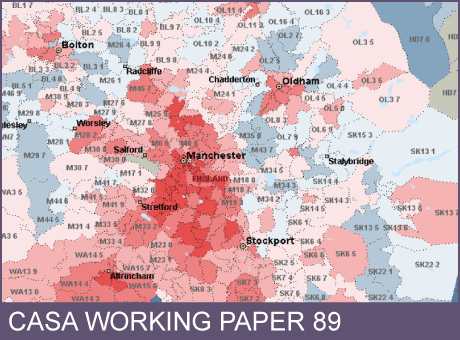CASA Working Paper 89

1 November 2004
Central Place Theory and Geodemographics - The application of Central Place rank values to Zones of Residence
This paper is one of a series of research papers which form part of an ESRC funded research project on -The Quantitative Analysis of Family Names'. The purpose of this project is to assess the contribution that information on the geographic distribution of family names can make to the study of historic migration patterns within local areas of Great Britain.
The particular focus of this paper is Middlesbrough and East Cleveland, to which economic migrants were drawn in large numbers from Scotland, Ireland and Cornwall as well as from the North East of England during its rapid nineteenth century industrialisation. By examining the geographic distribution of different types of family name in the Middlesbrough area in 2003 it is possible to infer that the descendants of Scottish migrants have been more upwardly mobile than descendants of Irish migrants and that few descendants of Cornish migrants have moved out of the mining villages in which they originally settled. Among the descendants of Scottish and Irish migrants there is clear evidence of social stratification between the descendants of those who originally migrated directly to Middlesbrough and those who reached Middlesbrough indirectly and / or only in recent years. Both communities have fared less successfully than those who moved to Middlesbrough from elsewhere in the North East of England whilst the most economically successful Middlesbrough residents appear to be drawn predominantly from people with names traditionally found in regions of the country other than the North East.
This working paper is available as a PDF. The file size is 810KB.
Authors: Richard Webber
Publication Date: 1/11/2004
 Close
Close

